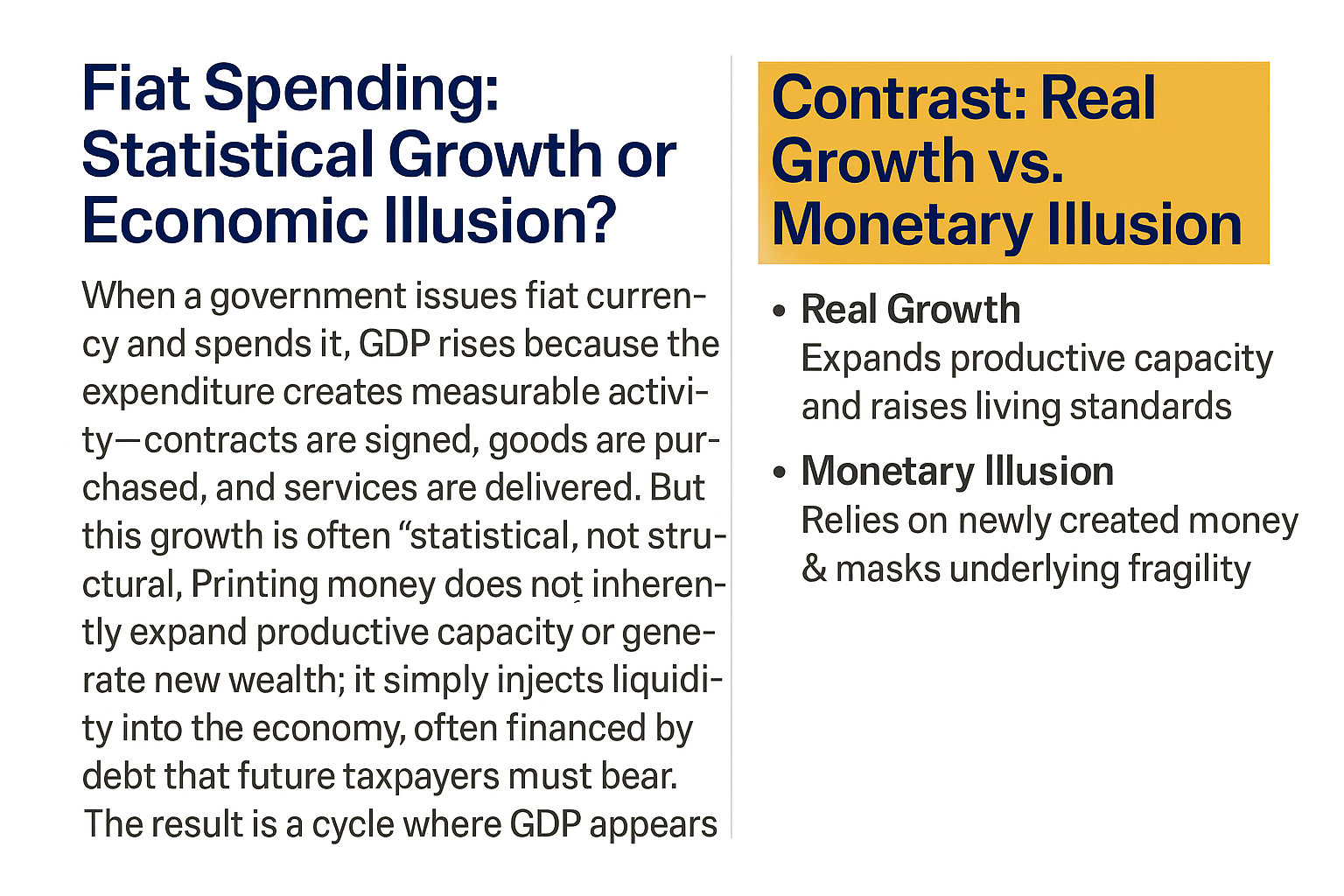Summary
When the government issues fiat currency and spends it, GDP rises because new money creates demand for goods and services. Under the expenditure approach, government spending counts as output regardless of whether it’s funded by taxes or borrowing.
Is It Real Growth or a Sham?
- Real Growth is the kind of growth that truly matters. It occurs when production capacity expands, resulting in more goods, services, and innovations that improve living standards. Understanding and promoting this type of growth is crucial for our economic health.
- Debt-fueled growth from fiat issuance can be illusory if it doesn’t increase productivity or capital formation. It merely redistributes purchasing power and inflates prices, creating obligations (such as interest and future taxes) without generating new wealth. This should raise concerns about the long-term implications of such growth.
- It doesn’t increase productivity or capital formation.
- It merely redistributes purchasing power and inflates prices.
- It creates obligations (interest, future taxes) without generating new wealth.
In that sense, it’s closer to a “flow illusion”: GDP measures activity, not sustainability. Printing money and spending it can make the economy appear larger on paper, while eroding its underlying financial health.
Fiat Spending: Statistical Growth or Economic Illusion?
When a government issues fiat currency and spends it, GDP rises because the expenditure creates measurable activity—contracts are signed, goods are purchased, and services are delivered. However, this growth is often statistical, rather than structural. Printing money does not inherently expand productive capacity or generate new wealth; it simply injects liquidity into the economy, usually financed by debt that future taxpayers must bear. The result is a cycle where GDP appears to grow while underlying fiscal health deteriorates. True prosperity comes from innovation, investment, and efficiency—not from monetary expansion that masks fragility behind inflated output figures.
